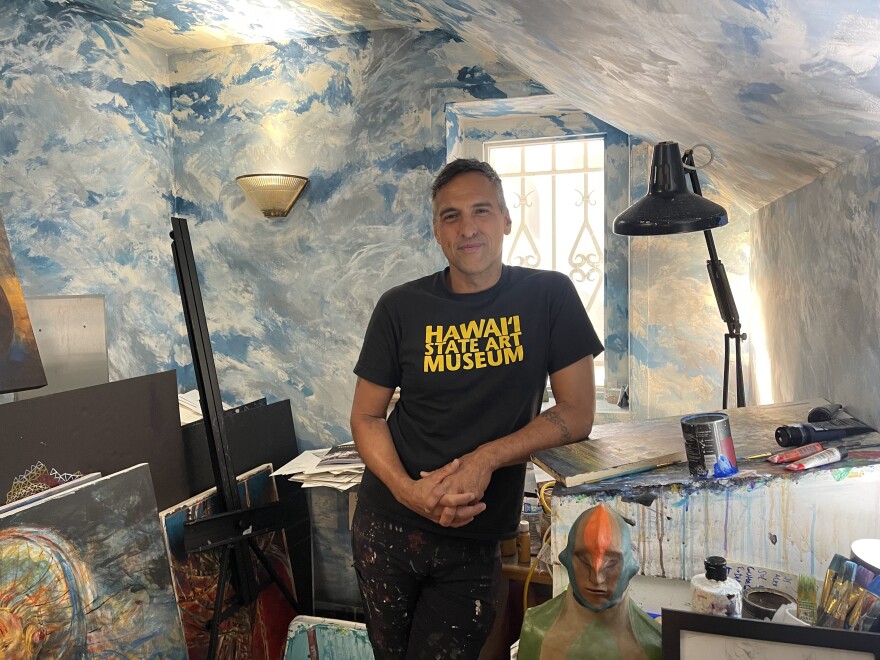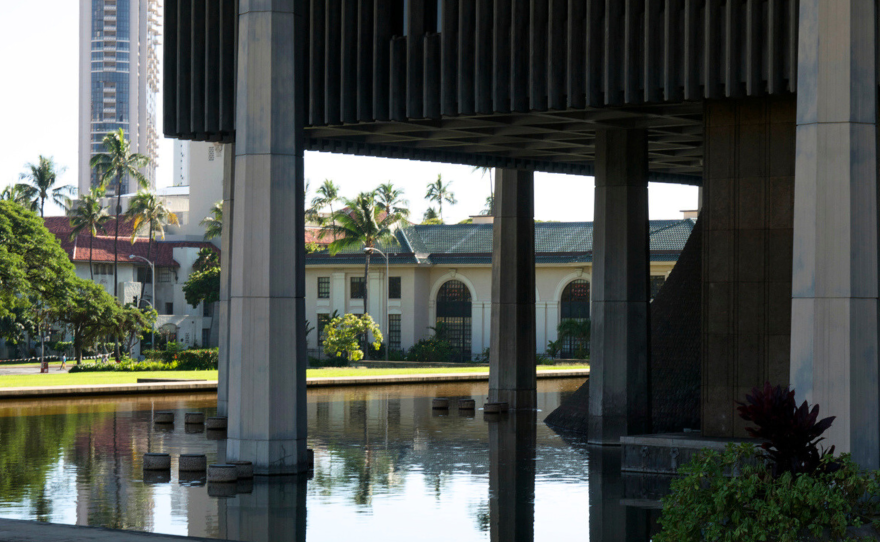The State Foundation on Culture and the Arts Board of Commissioners has selected Native Hawaiian artist Solomon Enos to design the state Capitol's reflecting pools with a waterless display — an alternative to the original pool's water that leaked into the building's offices for several years.
Enos has been creating art for more than 30 years, adept at oil paintings, book illustrations, murals and game design. He will spend the next two years working on the large-scale art project involving fabricated glass that is expected to cover more than 54,000 square feet of the pools.
"It's a huge kuleana," he said. "I'm absolutely ready for it because I've been involved in community work from a very early age."

At Wednesday's meeting, the panel also approved Peters Studio LLC to provide glass materials similar to those used in the pool at the public art museum Capitol Modern.
The Hawaiʻi Capitol's reflecting pools, built in the 1960s, were created to symbolize the ocean surrounding the islands. But water in the pools has been leaking into the chamber offices, resulting in the state draining the water two years ago and setting up barriers.
The state budgeted $33 million for the pool renovation, including repairing leaks and waterproofing.
Separately, the state foundation is using its special fund to pay for the artist and design fee, which Enos set at $233,507 to cover labor, materials, facilities, travel and other expenses.
Jonathan Johnson, the state foundation's project manager, told the board that the SFCA is working with the State Historic Preservation Division and the state Department of Accounting and General Services Public Works Division on access and visual representation of the reflecting pools.
"We're designing a solution that will prevent the building from leaking, yet we'll maintain the architectural feature of water," he said.
The new design could save the state water and money in the long run. Reducing water became a priority after concerns about drought and the 2021 fuel leak from the Navy Red Hill storage facility that contaminated the water serving 93,000 residents near Pearl Harbor.

Enos was selected from four applicants, narrowed down by the Art Advisory Committee under the state foundation.
Enos' design concept will feature a walkable mosaic floor mural, using up to 6,000 glass panels measuring 3 by 3 feet. He plans to hand paint and airbrush the colors onto the glass to create ripple effects of ocean currents.
He described the Capitol building as a "giant art installation" that happened to be a building and wanted to maintain its image from the original architect.
"The overall idea is acknowledging the role that Hawai'i plays across the Pacific and around the world," he said. "It's waves of change and waves of effect. The design is made to dance with the structures."
The aesthetic design would mirror artist Tadashi Sato's mosaic centerpiece in the Capitol Rotunda.
The project is expected to be completed by 2026.





